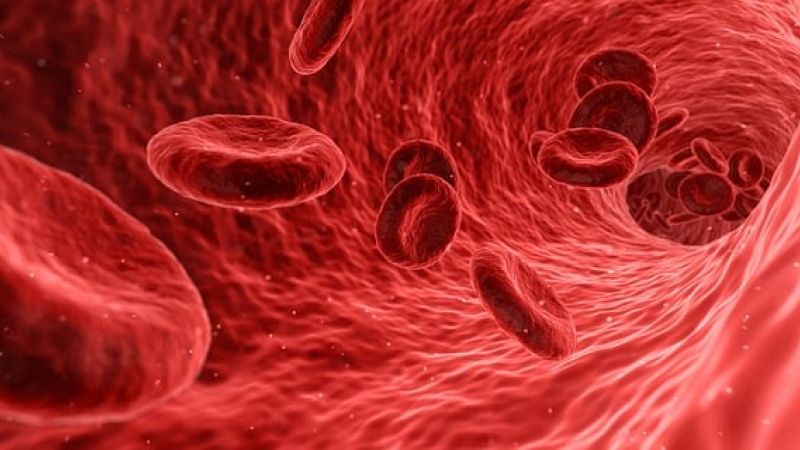
SA-β-gal and senescence
What is SA-β-gal?
SA-β-gal is an enzyme and considered the best biomarker for cellular senescence, which is the permanent arrest of cell growth. Senescence increases as we age and is one of the most important hallmarks of aging. Senescent cells are “zombie” cell that do not work properly, thereby negatively impacting health. Senescent cells are characterized by morphological and metabolic changes, chromatin reorganization, altered gene expression, and a pro-inflammatory phenotype known as the senescence-associated secretory phenotype (SASP). SASP proteins secreted by senescent cells, especially inflammatory cytokines, play a causative role in aging and all age-related diseases such as cancer, diabetes, atherosclerosis, osteoarthritis and infectious diseases.
Senescent cells may play a protective role because the right amount of inflammation and senescence signal for regeneration factors, and it plays a role in contributing to normal development, cell plasticity and tissue repair, as a dynamic and tightly regulated cellular program.
While senescence can be measured in cells and tissues by a variety of biomarkers and methodologies, Jinfiniti Precision Medicine offers the first commercially available senescence test for serum or plasma. The senescence biomarker measured in blood should reflect senescence level in the whole body or pathological sites. While the precise cutoff values remain to be determined, the recommended cutoffs are based on analyses of several thousand persons without obvious diseases as well as thousands of patients with various diseases and conditions including cancer and diabetes.
Risk factors and how senescent cells cause harm
Cellular senescence can be triggered by a number of cellular stresses, including oxidative stress, telomere dysfunction, non-telomeric DNA damage, epigenetic repression of the INK4a/ARF locus, and oncogenic activation among others. Poor lifestyle choices, like lack of exercise and overeating, can contribute to cellular senescence.
Intervention tips
A healthy lifestyle including exercise can help prevent the formation of senescent cells. Likewise, intermittent fasting has been shown in animal models to promote autophagy, or cellular “self-eating” that helps clear out damaged cellular components including mis-folded proteins.
Senolytics are drugs that can reduce or eliminate senescent cells. A number of flavonoids, particularly fisetin, have been shown to have senolytic activity. Emerging natural compounds have been discovered to be effective senolytic agents, such as quercetin, fisetin, piperlongumine and the curcumin analog. The combination of dasatinib (an anti-cancer drug) plus quercetin (a flavonoid supplement), have been shown to decrease senescent cells in humans.
The SA-β-galactosidase test gives you a picture of your cellular senescence and will help you and your medical professional evaluate your level of senescence.
Further reading
- Lee, B. Y., Han, J. A., Im, J. S., Morrone, A., Johung, K., Goodwin, E. C., Kleijer, W. J., DiMaio, D., & Hwang, E. S. (2006). Senescence-associated beta-galactosidase is lysosomal beta-galactosidase. Aging cell, 5(2), 187–195. https://doi.org/10.1111/j.1474-9726.2006.00199.x
- Fuhrmann-Stroissnigg, H., Santiago, F. E., Grassi, D., Ling, Y., Niedernhofer, L. J., & Robbins, P. D. (2019). SA-β-Galactosidase-Based Screening Assay for the Identification of Senotherapeutic Drugs. Journal of visualized experiments : JoVE, (148), 10.3791/58133. https://doi.org/10.3791/58133
- Dolgin E. (2020). Send in the senolytics. Nature biotechnology, 10.1038/s41587-020-00750-1. Advance online publication. https://doi.org/10.1038/s41587-020-00750-1
- Overview of Cellular Senescence and Aging | Cell Signaling Technology. (2020). Retrieved 24 November 2020, from https://www.cellsignal.com/contents/_/cellular-senescence/overview-of-cellular-senescence
- Freund, A., Orjalo, A. V., Desprez, P. Y., & Campisi, J. (2010). Inflammatory networks during cellular senescence: causes and consequences. Trends in molecular medicine, 16(5), 238–246. https://doi.org/10.1016/j.molmed.2010.03.003
- Rhinn, M., Ritschka, B., & Keyes, W. M. (2019). Cellular senescence in development, regeneration and disease. Development (Cambridge, England), 146(20), dev151837. https://doi.org/10.1242/dev.151837
- Don’t Be a Zombie: Senolytics, Exercise and Fasting Fight Off Senescent Cells. (2020). Retrieved 24 November 2020, from https://medium.com/lifeomic/dont-be-a-zombie-senolytics-exercise-and-fasting-fight-off-senescent-cells-cc720d88240
- Yousefzadeh, M. J., Zhu, Y., McGowan, S. J., Angelini, L., Fuhrmann-Stroissnigg, H., Xu, M., Ling, Y. Y., Melos, K. I., Pirtskhalava, T., Inman, C. L., McGuckian, C., Wade, E. A., Kato, J. I., Grassi, D., Wentworth, M., Burd, C. E., Arriaga, E. A., Ladiges, W. L., Tchkonia, T., Kirkland, J. L., … Niedernhofer, L. J. (2018). Fisetin is a senotherapeutic that extends health and lifespan. EBioMedicine, 36, 18–28. https://doi.org/10.1016/j.ebiom.2018.09.015
- Li, W., Qin, L., Feng, R., Hu, G., Sun, H., He, Y., & Zhang, R. (2019). Emerging senolytic agents derived from natural products. Mechanisms of ageing and development, 181, 1–6. https://doi.org/10.1016/j.mad.2019.05.001
- Hickson, L. J., Langhi Prata, L., Bobart, S. A., Evans, T. K., Giorgadze, N., Hashmi, S. K., Herrmann, S. M., Jensen, M. D., Jia, Q., Jordan, K. L., Kellogg, T. A., Khosla, S., Koerber, D. M., Lagnado, A. B., Lawson, D. K., LeBrasseur, N. K., Lerman, L. O., McDonald, K. M., McKenzie, T. J., Passos, J. F., … Kirkland, J. L. (2019). Senolytics decrease senescent cells in humans: Preliminary report from a clinical trial of Dasatinib plus Quercetin in individuals with diabetic kidney disease. EBioMedicine, 47, 446–456. https://doi.org/10.1016/j.ebiom.2019.08.069
Lastly, if you’re interested in going deeper on health-related content, here are a few of our recent posts that you may want to read:
Read More












